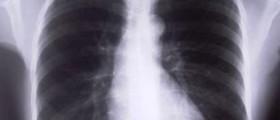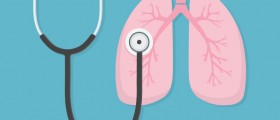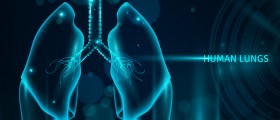
Chronic lung disease is the condition that most commonly affects infants who are born prematurely. Chronic lung disease is featured by damaged lung tissue that leads to respiratory and health problems. In chronic lung disease, the lungs trap air or collapse, fluid accumulates and there is an extra production of mucus. Fortunately, chronic lung disease in newborns is rarely fatal and most children completely recover from the disease.
Causes of Chronic Lung Disease
Chronic lung disease is also known as bronchopulmonary dysplasia or BPD. This illness can occur in newborns due to several causes. Most common cause of BPD is premature birth. Infants born at less than 26 weeks gestation and whose birth weight is less than 2.2lb are most likely to develop chronic lung disease as their lungs are not fully developed at birth. Underdeveloped lungs are susceptible to infections, swelling and fluid buildup that can result in bronchopulmonary dysplasia.
Infants who have received ventilation and high levels of oxygen shortly after birth for a long period of time may also develop chronic lung disease. Oxygen therapy is often given to babies who suffer from respiratory distress syndrome.
Patent ductus arteriosus is a congenital heart disorder that can lead to chronic lung disease. Genetic abnormalities that affect development of the lungs can be responsible for BPD. Lung infections like respiratory syncytial virus (RSV) can also result in chronic lung disease in infants. Finally, the illness can be due to lack of nourishment, particularly vitamin A.
Symptoms of Chronic Lung Disease
The primary symptom of chronic lung disease is difficulty breathing. An infant with chronic lung disease typically exhibits grunting, rapid breathing, flaring of the nostrils and wheezing. The infant uses the neck, chest and abdominal muscles for breathing and may suck in more than usual (chest retractions). Chronic lung infection also causes trouble feeding and gaining weight. Additionally, the affected baby has pale, gray or blotchy skin, particularly on the tongue, lips, earlobes and nail beds.
Diagnosis of Chronic Lung Disease
Bronchopulmonary dysplasia is a chronic disease that develops gradually and can be first suspected when difficulty breathing. Diagnosis can be confirmed if the infant requires additional oxygen after 28 days of age or needs oxygen therapy at 36 weeks of gestational age. To rule out other respiratory problems, a doctor will order chest X-ray, blood tests and echocardiography.
Treatment for Chronic Lung Disease
Severity of chronic lung disease determines the treatment. Treatment may include oxygen therapy and medications such as steroids, bronchodilators, diuretics. IV fluids and high-calorie formulas are also often used. Infants with chronic lung disease are initially treated at intensive care unit but they may also require extra oxygen at home by the end of their first year.







_f_280x120.jpg)

,-Asthma-And-Anxiety_f_280x120.jpg)







Your thoughts on this
Loading...